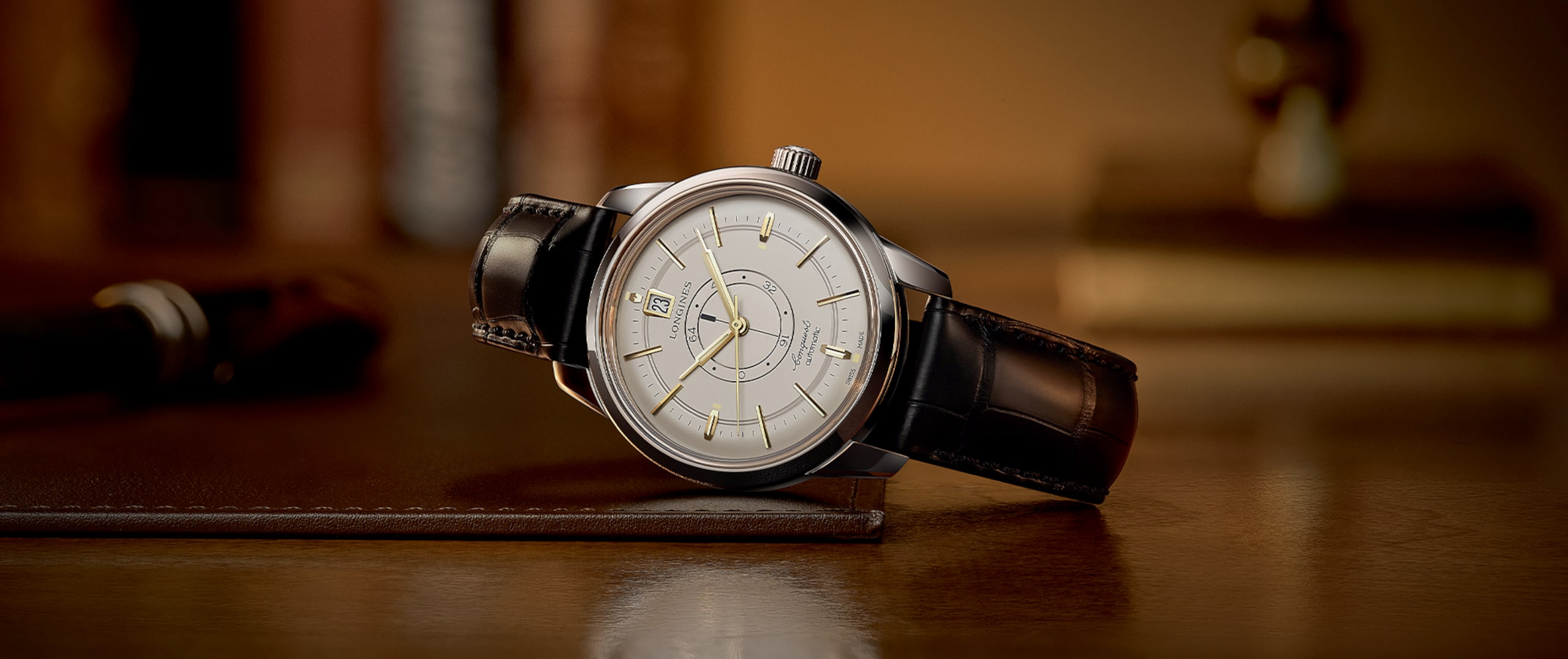
What is Power Reserve on a Watch?
One of the most asked-about concepts in mechanical watches is power reserve. Essentially, power reserve is the amount of stored energy inside a mechanical watch (the amount of time it can continue to run for) before running out of power.
The power reserve of a watch is the amount of time a mechanical watch will run after the watch has been fully wound. Also referred to in the Swiss watchmaking industry as “Reserve de Marche,” today’s power reserve watches offer anywhere from 42 hours of power reserve and above.
How Power Reserve Works
All mechanical watches, whether they are self-winding (automatic) or manual-winding mechanisms are powered by a main spring that, when wound, coils tightly. That spring is placed inside a barrel so this is where the energy is stored. Once fully wound, the spring begins to unwind in a consistent manner, releasing constant energy to move wheels, hands, date, and any other functions.
When the spring is fully unwound, the power has been spent and the watch stops working until it is wound again. The length of the mainspring directly correlates with the amount of power reserve a watch has. The longer the spring, the longer the power reserve or also the reduction of the vibration, i.e. from 28’800 A/h to 25’200 A/h. (less vibration, less energy needed).
Additionally, some watches are equipped with two barrels and springs to offer even longer power reserve.
Automatic watches house an oscillating weight that continues to power the watch with the movement of the wrist. Depending on the power reserve, a watch can be worn for some time, taken off for a day, and picked right back up with the time still running. If you take the watch off, for instance, on a Friday night and don’t pick it up again to wear it until Monday morning, you may have to adjust the time if the power reserve was exhausted, or you may not depending on the power reserve of that watch. The average automatic watch is usually endowed with approximately 36 to 48 hours of power reserve. The majority of the automatic watches from Longines offer an average 64 hours of power reserve.
In manual wind watches, the power reserve supply is a bit longer than in an automatic watch, but it still lessens and is spent when the watch spring is fully uncoiled unless the owner winds the watch crown by hand before that point in time.
How to Power a Watch
In order to supply the power reserve, the crown needs to be wound. With Longines watches, the crown should remain in position 0 (the pushed-in position) and rotated. If the watch has a screw-in crown, the crown will need to be unscrewed before winding the crown. Depending on the models, some crowns can be wound in either direction. An automatic watch cannot be overpowered, so there is no worry about turning a crown too many times. To prevent the mainspring from being overtensioned, it is equipped with a safety device that differs between automatic and hand-wound watches. On automatic watches, the end of the mainspring is fitted with a particularly strong stainless steel piece (known as a slipping clutch), which allows it to simply slip through the barrel when the watch is fully wound without further tensioning the mainspring.
Mechanical watches have a mechanism in the movement that disengages the winding gears from the mainspring once it is fully wound
In addition, a watch can be powered through the kinetic movement of a wearer’s arm. However, it is still important to wind the watch to fully power the watch because the movement of the watch can be dependent on daily activities. For example, a wearer that sits at an office desk for most of the day may need to wind the watch more.
Power Reserve Indicators
Many mechanical watches offer a power reserve indicator on their dial. A power reserve indicator displays the time the watch is powered for from fully wound and indicates the amount of power left in the mainspring any at moment. It measures energy as the watch’s spring uncoils. There are many different ways to display power reserve and depending on the watch, you might find an arrow indicator pointing to numbers in an arched aperture, or you might find a liner display or even an “up/down” indication. Some watches display a color-coded gauge display that, when fully wound, is blue, and it moves to red as a warning when the power gets low. Others use a + or – sign. Some watch enthusiasts love power reserve indicators on dials for the beauty of design as well as a function feature.
Not all mechanical watches boast a power-reserve indicator on their dials. The value of a power reserve indicator on the dial is that it shows when the watch needs rewinding – either by turning the crown on a manual-wind watch, or by wearing the watch for a while with self-winding watches.
Discover more articles
View all